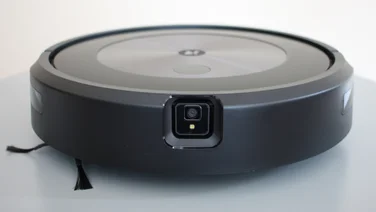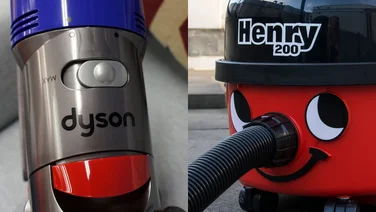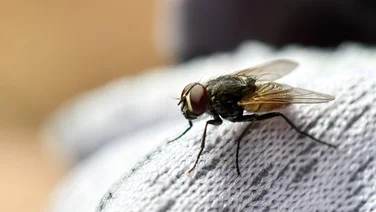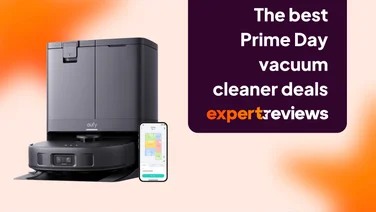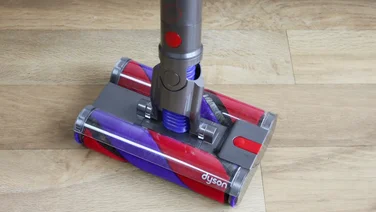To help us provide you with free impartial advice, we may earn a commission if you buy through links on our site. Learn more











- Excellent cleaning performance
- Loaded with advanced features
- Can climb steps up to 4cm tall
- Poor battery life
- A bit on the slow side
- Gets stuck more often than we’d like
Dreame may not be the most immediately recognisable robot vacuum brand in the UK, but I suspect you have heard of the company it’s part of. Well, sort of a part of. You see, Dreame is part of the Xiaomi Ecological Chain, a network of independent companies that partner with Xiaomi at a technical level while operating as separate entities.
The Xiaomi connection may not have any obvious implications on the hardware front, but it should be reassuring to potential customers regarding long-term software support and development. That’s of particular importance when you are coughing up £1,300, which is what Dreame’s new top-of-the-line Aqua10 Ultra Roller Complete will set you back.
That’s an awful lot of money for a robot vacuum, even one with such a long features list and more than a few tricks up its sleeve.
What do you get for the money?
In terms of size, the Aqua10 is similar to the Eufy Omni E25 I tested recently, measuring a fairly standard 35 x 35 x 9.8cm (WDH). Its base station is quite a bulky affair, though, at 42 x 40 x 50cm (WDH), although to be fair to it it does a lot of heavy lifting. As well as acting as a recharging dock, it houses the cleaning fluid, fresh and waste water tanks for the mop and a dust bag for storing drying dirt and debris.
While the Eufy’s base station is curved and dark, the Dreame’s is angular and white. Both look rather impressive, but the Dreame shows up dust less obviously.











While many robotic mops use two spinning pads to clean hard floors, the Aqua 10 uses a single roller, which not only does a better job but also extends on each side, so the mopping area is pretty much the same as the diameter of the robot vacuum itself.
Dream has taken the mop assembly one step further because, as well as the mop being able to retract into the chassis by 14mm, there is a plastic shield that rotates around the mop brush to physically isolate it from any rug or carpet that the unit encounters after mopping a hard floor.











When it comes to features, Dreame has thrown the kitchen sink at the Aqua10. So, you get 360-degree LiDAR navigation supported by two 3D cameras, an LED headlight and a second 160-degree wide-angle camera for obstacle avoidance.
The LiDAR system is in a retractable tower that sinks flush with the body of the Aqua10 when not in use. This has the effect of reducing the height of the unit from 120mm to just 98mm, which means it’s able to get under more furniture than most other robots that use LiDAR.
This meant the Dreame Aqua10 was able to vacuum under my bed, something the Eufy E25 with its fixed tower couldn’t do.











Other nice features include the ability to patch into the vacuum’s forward-facing camera, so you can get a vacuum-eye view of the cleaning process. You can also use the two-way audio feed to tell pets to get out of the way.
Dreame has even added a record/snapshot feature to the camera and several pre-recorded sounds, including a cat’s meow, a dog’s bark and approaching footsteps. Buried in the Pet section of the app is an option to capture a GIF of any pets encountered while cleaning.
Given the noise the Aqua10 makes, however, I struggle to think of a real-world application for some of these audio-video features.
What’s it like to use?
When I first unboxed the Aqua10, I feared assembly was going to be a major DIY affair because the first small box that comes out of the package is the one with the spares and accessories in it.
Dreame provides you with a wide range of spares, including filters, a mop roller, two side brushes, a main carpet brush, and two spare dust bags. There’s also one big bottle of cleaning fluid, two smaller bottles containing pet odour remover, and a cleaning brush.











Initial setup
Thankfully, all those bits and pieces also come preinstalled, so set-up is really no more than plugging in the base station, adding fluids and then running through the setup routine in the app.
Adding clean water to wash the mop is very straightforward, and the cleaning solution and pet odour eliminator are both added manually to a slide-out cartridge rather than by sliding the bottle it comes in into a receptacle. This means you can use your own preferred cleaning solutions rather than Dreame’s own, which costs a fairly hefty £12.99 per litre to buy.
I have my own preferences in regards to the cleaning solutions I use, so the option to use those would be a major attraction to me as well as a likely cost saving. It’s also worth mentioning that the pet odour fluid that comes bundled with the Aqua10 isn’t yet available from Dreame in the UK.
Companion app and voice control
Dreame’s app may lack the simple elegance of the Eufy equivalent, but my God, it gives you a supremely granular level of control.
As well as the expected features such as setting up exclusion zones, renaming rooms, setting up cleaning schedules and the like, there’s a plethora of other settings available. Not only can you tweak the levels of suction power, but you can also tell how to clean and in what order.











For instance, it can be set to either vacuum or mop, vacuum and then mop, or mop after vacuuming. And all these functions are interchangeable on a room-by-room basis.
If that all sounds too much of a headache, you can leave the system in CleanGenius mode, which leaves it all up to the robot’s AI-enhanced decision-making system.











And there’s even a range of voice commands that can be spoken after the words “OK, Dreame”. The app lists dozens of commands, but when I asked it to “hoover the bedroom”, it understood what I was asking it to do.
Incidentally, the Dreame Aqua10 is also compatible with the Matter IoT connectivity standard for smart home devices.
Is it good at finding its way around?
This is an area where the Aqua10 only rates as mediocre. During its initial deep clean and mapping run, the Aqua10 got too close to the top of the staircase and needed rescuing after one of its drive wheels rolled over the edge of the top step. It also got into a wrestling match with the pedestal mat by the toilet and got itself stuck.
Neither of those incidents was a major problem, and to be fair it managed to reverse itself out of the gap between my bedside table and the wall that trapped the Eufy E25. Once the upper floor had been fully mapped, I placed an exclusion zone around the top of the stairs and toilet to prevent any further issues.











While general navigation worked just fine, on three occasions, the Aqua10 issued an alert that its drive wheels had become entangled. However, upon inspection, it had simply driven headlong into the skirting board and seemingly couldn’t work out how to move away, much like a horse cast in a stall.
Object avoidance
When it encountered everyday household items like shoes, office chairs, curtains and extension cables, the Aqua10 did a good job avoiding them, but it failed to spot the artificial pet poo I placed in its path on a brown carpeted floor. Had the excrement been real, the resultant mess could have been quite agricultural.
When faced with a pet pee pad, the Aqua10 did much better, spotting it and easily navigating around it. The Aqua10 did manage to spot the fake doings on my lighter kitchen floor, which makes me think it may have been the brown-on-brown issue that was throwing the camera system off its game.











Steps, rugs and thresholds
The Aqua10’s suspension has a built-in height-adjustment system, which means it can happily ride over rugs that are up to 3cm deep, while two articulated arms adjacent to the drive wheels give it the ability to climb over 4cm steps or an 8cm obstacle if there is some sort of horizontal surface between the first 4cm step and the second.
I wouldn’t describe the way the Aqua10 climbs steps as being elegant, but it is effective and, more importantly, it’s not so clumsy as to damage whatever it is that it’s climbing.
How well does it clean?
Cleaning performance is exceptionally good. With a maximum suction power of 30,000Pa – 50% more than the Eufy 25’s rating – the Aqua 10 aced all our carpet vacuum tests and scored right up with the AEG RX9.2, a robot vacuum compromised by its navigational ability and software, but which delivered superb cleaning results.
Even with the vacuum set to Intense – the third of four power settings, ranging from Quiet to Max – the pile on the carpet had that well-hoovered look it gets when I give it a darned good going over with my Shark PowerDetect upright.
The roller mop did an excellent job of cleaning the kitchen floor, too. Not only did the extending mop roller get right up to the edge of the kitchen cabinets, but when it encountered a really obstinate stain, it had the gumption to circle back and continue scrubbing until it was fully cleaned.
Dreame boasts that the dock cleans the mop roller with 100-degree water to eliminate odours and 99.99% of bacterial nasties. Certainly, the mop always looked and smelled like new after the cleaning process had finished.
The Aqua10 also has a useful Pet Recognition setting, which doesn’t improve mess detection but does crank up the suction power when it encounters random bits of kibble scattered around your pet’s food stand and increase the frequency of emptying trips to the dock to dump excess pet hair.
The impressive cleaning performance does, however, come at a cost. First, the Aqua10 is not fast, taking almost twice as long as the Eufy 25 to vacuum and clean either of the 21m2 floors of my house.
That’s got quite a bit to do with the Aqua10’s habit of doing the periphery of rooms first, then retracing its steps to do the middle bit. The Aqua10 also sometimes makes some curious navigational choices. On one occasion, it doubled back into the bathroom when heading back to the charging dock after finishing a vacuum run in the study.
The slightly meandering navigation, powerful suction and LED light also impact battery life. A standard vacuum run of my bedroom, bathroom, hall and study took the battery from 100% to 25%. Once the battery level hits 10% the Aqua10 heads back to the charge dock. Cleaning the same area only took 30% out of the Eufy 25’s battery capacity.
If my house were much bigger and had a third bedroom, I’m not entirely sure the Aqua10 would be able to do the job on one charge.
Should you buy the Dreame Aqua10 Ultra Roller?
There’s no doubting the Aqua10’s cleaning ability; it really is quite excellent, and the plethora of features it comes with is truly impressive, even if a few of them may not get much use in the real world.
The odd occasion when the Aqua10 got itself ambushed by the skirting board knocked a little of the shine off the user experience, but it’s the way of robo vacs that firmware updates tend to iron out these issues over time. Early models of the Eufy E25 were apparently borderline unusable, but by the time I got to test it in the UK, all the reported issues had been rectified.
The big issue is the price. The Dreame Aqua10 Ultra Roller Complete is currently selling for £1,299. At the time of writing, the Eufy E25 can be picked up for £599, which is less than half the price. The Aqua10 is the better of the two, but not to the tune of £700.


